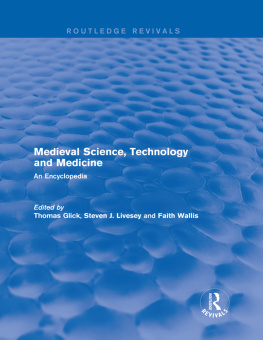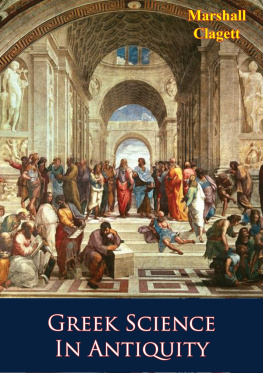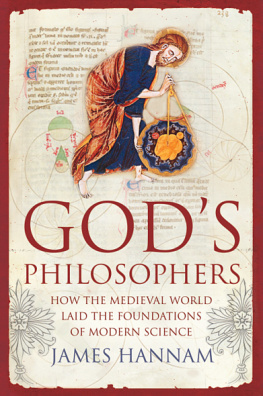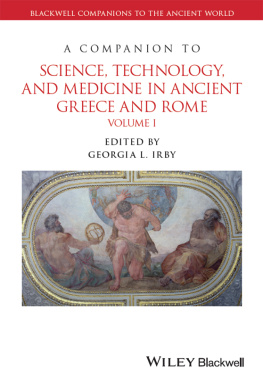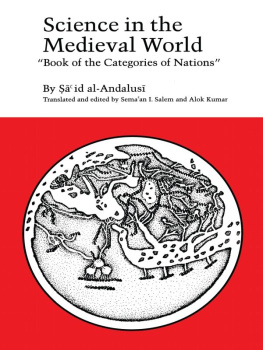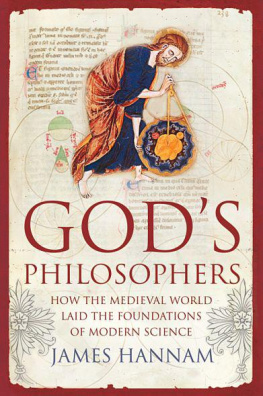Salernitan Questions
The term Salerntian Questions refers to a collection of twenty-nine or thirty to three hundred thirty-two (and even as few as seven in one manuscript) Latin questions and answers on natural philosophy ( Questiones phisicales ), probably compiled c. 1200 (if not somewhat earlier) by an English scholar perhaps in the circle of Hereford known for its translations of Arabic mathematical treatises into Latin.
The date of the collection is estimated on the basis of the quotations, the absence of material resulting from the so-called new Aristotle, and the reduced use of Latin translations of Arabic works by *Gerard of Cremona (c. 11141187).
The text, which includes later interpolations, is formed of different groups of questions from various sources, all of which cannot necessarily be well identified. The original compiler seems to have been a non-clerical master in a faculty of arts (since he refers to sexual matters without the reticence that might be expected from religious or monastic teachers), who was trained in physica at *Salerno or another place not well identified (Montpellier or Paris) where Salernitan teaching had arrived prior to 1200. His audience probably was students of medicine, and his teaching activity is likely to have dealt with physica (including medicine). Some theological content is present in the collection, a fact that does not necessarily imply that the later masters who contributed to the collection taught in religious schools; some of them might have had clerical status.
The core of the collection comes almost certainly from the School of Salerno (there is an explicit reference to Salerno in two questions), and is influenced by the teaching of such Salernitan masters as Urso and Maurus of Salerno. The sources include classical material such as the Hippocratic Aphorisms in the translation attributed to *Constantine the African (d. after 1085); the Tegni (or Microtegni , or Ars parva ) of Galen in the versio antiqua , which seems to have been made from the Greek text and not from an Arabic version; inauthentic Galenic treatises ( De oculis, De spermate , and De compagine membrorum sive de natura humana ); some classical poets (Lucretius, Juvenal, Ovid, and Virgil); Latin encyclopedias (principally Pliny and *Isidore of Seville) and philosophers (Seneca); and Dioscorides, De materia medica . Late antique works are present with Vindicianus, the Gynaecia of Caelius Aurelianus, the Epistola de observatione ciborum of Anthimus, and the De viribus herbarum of Macer. Among the Salernitan and post-Salernitan works, one can quote the Pantegni theorica and other treatises of Constantine the African, the Anatomia of Copho, the Aphorismi, De coloribus , and De commixtionibus elementorum by Urso of Salerno, the Super Isagogen Ioannitii , as well as the Regulae urinarum by Maurus of Salerno, the De febribus of Garioponto, the Flos Medicinae of Salerno, the Anatomia Nicolai (c. 1170), the Circa instans of Mattheus Platearius, and the Liber Dietarum universalium by Isaac Israeli (*Isaac Judaeus). Among the texts by English authors there is the Dragmaticon of *William of Conches, and the Topographia Hibernie by Giraldus Cambrensis (c. 1185).
The genre of the questiones dates back to the Problemata of the Aristotelian school and was particularly productive in the Middle Ages, especially as a support for teaching. It remained in use during the Renaissance: for instance, the Speculator by Theodoricus Ulstenius (c. 14601508) used material from the Salernitan questions.
See also Aristotelianism; Articella ; Medicine, theoretical; Scholasticism
Bibliography
Lawn, Brian. The Salernitan Questions. An Introduction to the History of Medieval and Renaissance Problem Literature . Oxford: Clarendon Press, 1963.
. The Prose Salernitan Questions edited from a Bodleian manuscript (Auct. F. 3. 10) . London and Oxford: The British Academy and Oxford University Press, 1979.
A LAIN T OUWAIDE
Salerno
Salerno is a city in southern Italy along the coast of the Tyrrhenian Sea, south of Naples. Founded as a Roman colony in antiquity, it was essentially refounded by the Lombards in the eighth century, later serving as the capital of the Norman Principality of Salerno until Count Roger II, in creating himself King of Sicily, moved the capital to Palermo in 1130. Salerno, still known today as the Civitas Hippocratica (Hippocratic State), is famous in the history of science primarily for its medical school, the reputation of which extended throughout Europe, despite the fact that in the twelfth century it was no more than an informal gathering of masters and pupils. Its importance declined in the thirteenth century with the rise of rival medical centers in Bologna, Montpellier, and Paris. Nevertheless, its contribution to medical learning in western Europe was profound, for it was here that the highly philosophical Galenic medicine of the Arabic world first made its entrance into medieval western Europe.
Salernos medical history is often divided into three periods: early Salerno, when it was distinguished primarily by the empirical skills of its practitioners; high Salerno, essentially the twelfth century, when the most important Salernitan medical texts were compiled; and late Salerno, the thirteenth century and on, when Salerno continued to be a medical center of local importance but had faded from international prominence.
Most of the tales of early Salerno concern skilled individual practitioners. For example, the Norman historian Orderic Vitalis (1075c. 1142) tells of a monk who traveled in the mid-eleventh century to France and Italy in order to educate himself. Already erudite by the time he reached Salerno, he nevertheless found himself bested in medical knowledge by a learned woman ( sapiens matrona ). The citys doctors were always seeking ways to improve clinical medicine. In the mid-eleventh-century a Salernitan named Gariopontus revised and restructured a body of medical writings that had been circulating in Europe since late antiquity. His Passionarius was then commented on by students using textual exegesis similar to that which would characterize *Scholasticism. The same technique would later be used to analyze a body of introductory texts that came to be known as the * Articella and served as the foundation for medical teaching throughout western Europe.
In the twelfth century, dozens of other medical works were composed in Salerno, only some of which have identifiable authors. They included writings on medical theory (including three tracts on pigs, whose *anatomy was studied in lieu of human dissections); diagnosis and therapeutics (including general medicine, fevers, uroscopy, and *gynecology); and major *pharmaceutic handbooks (including the two most influential in all medieval Europe, the Circa instans and the Antidotarium Nicolai ). There was also work on medical ethics. Only *surgery seems to have remained underdeveloped among the medical subdisciplines at Salerno.
While empirical concerns with effective therapy never diminished, Salernitan practitioners increasingly tied their practices to an understanding of how medical theory explained the causes of disease and the effects of drugs. Practitioners moved from calling themselves simply medici (healers) to medici et phisici (healers and persons learned in natural science), hence the origin of the term still used in English today for medical doctor, physician. Perhaps influenced by the Muslims who still populated Sicily at the time, in 1140 King Roger II instituted a regulation that obliged prospective physicians to present themselves to his officials and judges for an examination of their skill and basic knowledge.
Salernos fortunes declined after the city was sacked by in 1194 by the Holy Roman Emperor Henry VI. Although some of the most accomplished theoretical work came from scholars active around 1200including *Urso of Calabria, *Maurus, and *Gilles of Corbeilthe absence of any major figures in the thirteenth century suggests a marked disruption in intellectual life. Outside Salerno, Salernitan texts, or works influenced by the perspectives of the Salernitan school (such as a series of natural science interrogations known simply as the *Salernitan Questions) were widely circulated, becoming particularly popular in England.

